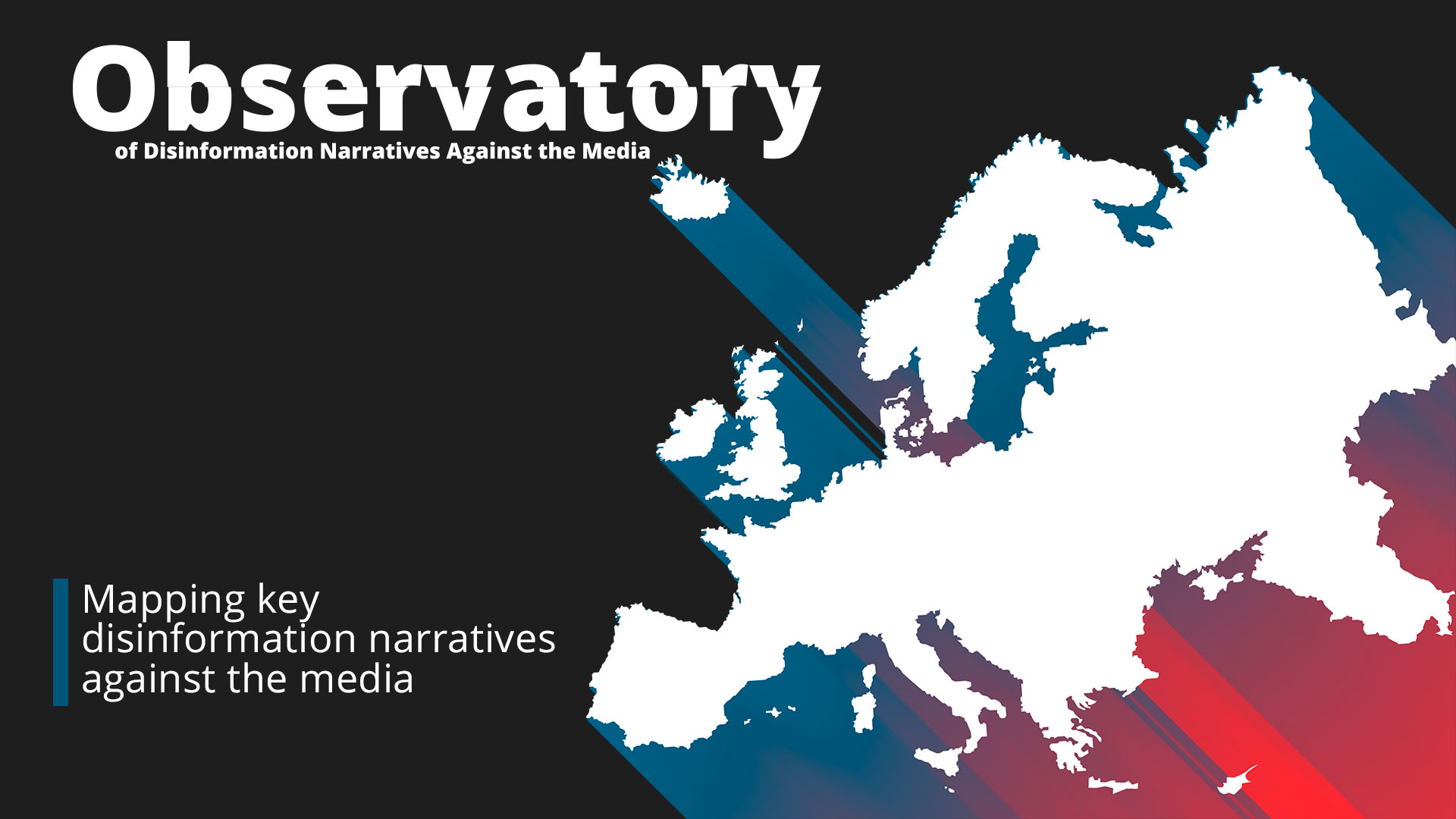The Vienna-based International Press Institute (IPI) has teamed up with Croatian fact-checking outlet Faktograf and German daily taz to launch an innovative platform documenting disinformation campaigns targeting journalists and media houses in Europe.
The Observatory of Disinformation Narratives Against the Media is part of Decoding the Disinformation Playbook, a joint initiative by the three organizations to decipher populist propaganda in Europe targeting fact-checkers and investigative journalists — both essential players in the fight against disinformation.
The rise of disinformation campaigns aimed at discrediting journalists and media organizations has reached alarming levels in Europe, as in other parts of the world. Through tactics such as online harassment, smear campaigns and legal intimidation, bad actors seek to erode trust in quality media, making it easier for disinformation to flourish unchecked.
The Observatory aims to highlight dangerous narratives and provide journalists, policymakers and the public with insights into how media is being systematically undermined in ways that threaten the foundations of a free press, a cornerstone of democracy.
Mapping disinformation narratives
Based on eight in-depth case studies conducted in six European countries since September 2022, the Observatory exposes the common disinformation narratives that have been adopted and adapted to each country by populist, nationalist and extremist leaders and movements.
The key narratives identified include:
-
- “Traitor” or “foreign agent”: Labeling journalists as “foreign agents”, “traitors” or “enemies of the people” is one of the most pervasive narratives used to discredit the press in Europe. Journalists are depicted as serving foreign interests rather than those of their own country. This discourse can be especially dangerous because, in certain contexts, it can be seen as legitimizing attacks against journalists as “enemies”.
-
- Censors” or “Ministry of Truth”: Misleadingly portraying media and fact-checkers as tools of censorship, aimed at controlling public opinion.
-
- Media as spreader of “fake news”: The “fake news” label has become a powerful tool for extremists and populists to discredit journalists and fact-checkers. The narrative is often used to dismiss critical, independent coverage that exposes their actions.
-
- Global elite mouthpieces: Suggesting that journalists serve powerful elites, pushing narratives of media as part of these alleged elite’s hidden agenda.
-
- Promoting “woke” ideologies: Framing the media as anti-traditional values, often conflating social issues with ideological battles.
-
- Promoting authoritarian regimes: In countries with histories of authoritarian rule, this narrative often exploits fears of a return to those oppressive regimes. Journalists are sometimes portrayed as agents or sympathizers of a new form of authoritarianism,
-
- Politically biased: This false narrative often labels journalists as supporters of extremist positions, whether left or right, and their work is falsely portrayed as ideologically driven rather than fact-based.
-
- Antisemitic rhetoric: The main antisemitic narrative against journalists involves portraying them as part of a global Jewish conspiracy that aims to control the media, manipulate public opinion, and undermine national sovereignty or “traditional” values.
-
- Xenophobic rhetoric: Spreading anti-immigrant and nationalist messages to alienate media that report on diversity and inclusion.
-
- Dubious finances: This false narrative accuses independent media of financial impropriety, often without evidence, to discredit their legitimacy.
These narratives fall into distinct categories but are often interconnected, echoing long-standing nationalist and populist rhetorics, conspiracy theories and gendered disinformation, among others.
This framework provides the public, journalists, policymakers and researchers with a valuable tool to identify the manipulation of public opinion through disinformation that directly threatens the credibility of independent journalism.
Dissecting the playbook to support media freedom
The Observatory of Disinformation Narratives Against the Media is a direct response to the need for greater awareness and resilience against online coordinated campaigns to silence critical media. By analyzing and revealing these disinformation strategies, it aims to reinforce public understanding of the essential role of independent media in democratic societies.
About the project partners:
- International Press Institute (IPI): Founded in 1950, IPI is a global network dedicated to safeguarding press freedom and supporting high-quality, independent journalism worldwide.
- taz: An independent German media cooperative since 1978, taz is committed to a reader-owned, transparent media model that ensures editorial autonomy.
- Faktograf: A pioneering fact-checking organization in Croatia, Faktograf promotes accountability and informed public discourse, backed by the European Fact-Checking Standards Network.
This initiative is supported by the European Media and Information Fund, managed by the Calouste Gulbenkian Foundation. The views expressed in the Observatory are those of the authors and do not necessarily reflect the Fund’s positions.For more information, visit the Observatory of Disinformation Narratives Against the Media.
